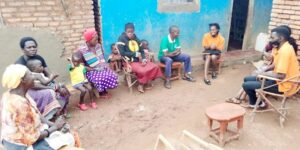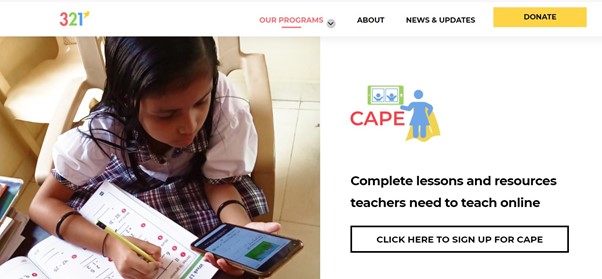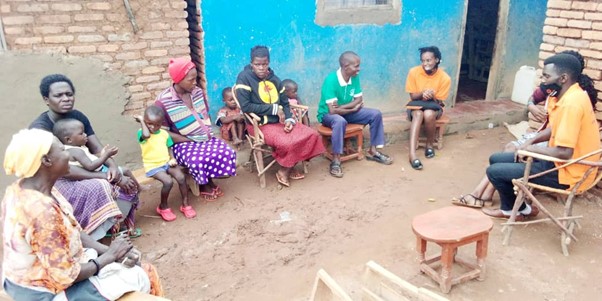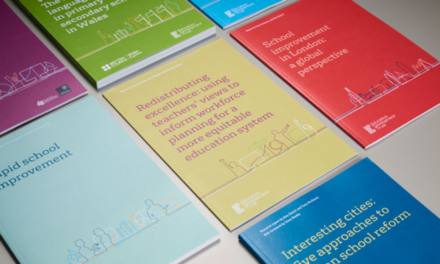This article was written by Wendy Kopp, CEO of Teach for All, and published on the Teach For All blog site on 25 February 2021.
The pandemic that has disrupted our world and exacerbated its inequities threatens to hold back a generation of young people — young people who, in most cases, we were already failing to equip to navigate an uncertain future. If we make it a priority to learn from the incredible leadership and innovations that have kept many of the most vulnerable children learning during the pandemic, we can ensure today’s young people do not become a left-behind generation.
More than 1.5 billion children have at some point been driven out of school by COVID-19, with half of them out of school for seven months or more. A survey from UNESCO, UNICEF, and the World Bank showed that about about half of students out of school were unable to participate in remote learning. Even in high-income countries, learning opportunities have been severely reduced. In Germany, a survey of parents showed that the time children spent on school-related activities each day when schools were closed was cut in half, from 7.4 to 3.6 hours. Teachers of some of the most disadvantaged students around the world report that many students have already dropped out, having been sent to work or to be married early; that even for students still engaged there is very significant learning loss as well as impacts on mental health and wellbeing; and that many teachers have been forced to leave the profession.
We risk severe setbacks for this generation, and we must remember that many young people — especially the most marginalized — weren’t learning and developing optimally even before the pandemic, when more than half of 10-year-olds in low- and middle-income countries had failed to learn to read entirely or were out of school. The World Bank projects that this “learning poverty” rate could grow by 10%, from 53% to 63%, affecting 72 million school-age children. Even in a country as wealthy as the U.S., McKinsey projects that on average, disadvantaged students will lose at least a year of learning, compounding the fact that the U.S. was far from providing each of its young people the kind of education necessary to access meaningful careers and solve the increasingly complex challenges the nation faces.
And yet, there is hope. Around the world, locally rooted, globally informed leaders — teachers, social entrepreneurs, and policymakers — have innovated, mobilized resources, and brought communities together to keep students learning throughout the pandemic. In so doing, they have generated new possibilities that could pave the way to reimagining an education system that was already deeply inequitable and insufficient for today’s students and today’s aspirations.
The question is not whether it is possible for this generation to thrive, but whether enough people will exert the leadership necessary to make the most of these possibilities, and whether we will prioritize supporting them to innovate and spread their new approaches.

Teach For Uganda fellow Denise Mirembe (second from right, in orange) meets with parents from Bwondha village in Mayuge district to discuss the effects of the COVID-19 pandemic on their children’s education.
Teach For Uganda fellow Denise Mirembe decided to hold small outdoor “cluster” classes for groups of ten students in her village community when schools closed — and discovered that this allowed her to connect with students and their parents in new ways. The focused, direct interaction in smaller groups has improved her students’ self-esteem and confidence. Denise finds they speak up more, ask more questions, and are more self-directed than they were before. All Teach For Uganda fellows are now implementing this model, keeping 8,000 students learning across 33 school communities. They’re considering how to work with school principals and other teachers to continue this approach long after the pandemic is over.
Early in the pandemic, the government of Nigeria’s Ogun State recruited Teach For Nigeria fellows to teach on radio and TV while schools were closed. These lessons were so successful that the organization recently launched the Teach For Nigeria Radio School, in partnership with two other local NGOs. Inspired by this effort, a group from Enseña Chile created their own radio lessons, which aired on more than 200 stations across the country and are now institutionalized in La Radio Enseña. Nayadeth Flores (16), a high school student in the central Chilean town of Los Álamos, had poor internet access and couldn’t download study guides and videos her teacher had sent via WhatsApp. She listened to La Radio Enseña and it helped her understand the lessons — about the differences between viruses and bacteria, the diseases they produce, and how to prevent them, including COVID-19.
“Teach For Nigeria sees a long-term future in the radio lessons once schools fully reopen, to reach even the most remote villages with high quality instruction which local teachers can integrate into their own lessons.”
La Radio Enseña is evolving into Canales Enseña (Teaching Channels) which is envisioned as “the Netflix of education” in Chile. It will house the 140 radio lessons already developed, along with new audio content, online and printed learning guides, an online platform where students and teachers can easily find content, and a WhatsApp chat bot called Aló Enseña to provide AI-driven automated learning support.
In other parts of the world, video-enabled innovations are helping make learning better and easier to access. In the U.K., where broadband internet access is high and many students have access to digital devices, Teach First alumni launched a virtual schoolhouse called Oak National Academy as a rapid response to the pandemic. Today, Oak provides access to the British curriculum in the form of more than 10,000 free high-quality video lessons across grades and subjects, allowing teachers to download resources, students to navigate the content themselves, and parents to use it as a resource to support their children. Similar approaches have made good teaching available around the world. The 321 Education Foundation, founded by Teach For India alumnus Gaurav Singh, built a free lesson bank called CAPE, whose videos are aligned to central and state board standards, but are optimized for use on basic devices with limited data connectivity. Along with giving students increased ownership of their learning, these video collections allow teachers to spend less time delivering direct instruction and more time facilitating learning with individualized attention and differentiation. Teach For Zimbabwe fellows began recording lessons as video files, so they can be shared on flash drives without an internet connection. They’re excited about the ways this will allow students to learn when they can’t attend school even in post-pandemic times — due to illness, the rainy season, or parental labor migration.

A free online lesson bank called CAPE has so far reached more than 300,000 students and 15,000 teachers with high-quality lessons.
Technology has also enabled teachers to broaden their students’ exposure. Teach For Romania fellow Mihaela Bucsa was surprised to find that many of her eighth graders had never ventured outside of their rural village — and how few were expected to progress to secondary school. With the challenges of COVID, she could no longer take her students on the field trips she’d relied on to develop their curiosity and love of learning. So she secured funding to provide digital devices for her class, and then arranged for her students to “visit” places they’d never have been able to see in person — including a sonographer’s practice, a meeting with Google in California, and even a black hole with an astronomer from the European Space Agency. These visits exposed her students to new worlds, brought professionals into her classroom to become invested in the success of her students, and have so much potential to strengthen education more widely.
“Schools and teachers everywhere are seeing the potential for new habits and tools to support parent engagement.”
Enseña por México fellows had planned to launch Jugamos Juntos (“Playing Together”) before the pandemic, with the goal of leveraging research on child development to provide parents with insights and ideas for play activities and caregiving skills. When COVID turned every parent into a home educator, Jugamos Juntos sessions went virtual, and Enseña por México saw a huge jump in interest and engagement from parents. They were able to reach far more of them, and also began to share the content over social media channels — achieving over 30,000 views per day. Such supports could create lasting benefits even when learning from home is no longer necessary.
Others have found new ways of enlisting additional supports for students. Teach First launched an Academic Mentor Program in partnership with the U.K government, which has already recruited 1,100 university graduates to serve as tutors in schools and help students catch up. In Australia, after two state governments said they were aiming to support around 500,000 students with around 10,000 tutors, Teach For Australia launched The Tutor Network which aims to provide free resources, training, and support for tutors and schools, something that could complement regular teaching for generations to come.
The pandemic has also led educators to take charge of broadening the curriculum, particularly around giving greater priority to students’ social emotional skills, mental health, and well-being. Teach For Pakistan fellows sought to address the emotional strains on their students — particularly girls — by creating learning routines, exercises, and games to connect them to their friends, help them process anxieties, and keep them committed to their learning and life goals. Several schools in the United States led by Teach For America alumni have begun to incorporate well-being as a main focus for their staff and students, implementing counseling for all staff, spaces for students to connect and build relationships, intentional time for socialization in lessons, and fewer assessments. Across these schools, these teachers and school leaders are advocating for this to be a permanent shift.
What we’ve seen during the pandemic is that children have continued learning where there are determined local teachers and educators with strong relationships with students and families, who have an understanding of local context, culture, available technology, and curriculum standards. It will, likewise, be locally rooted leaders who can ensure that this past year does not cast a lifelong shadow over a whole generation of young people. We need to invest in the development of these leaders, give them access to pathways to share ideas and practices across communities and countries, and encourage and support them to innovate and spread these innovations so that we enable a generation that was already at risk — and is now even more so — to thrive. We can make the most of new possibilities generated in this era to reimagine education and enable today’s students to access the education, support and opportunity to shape a better future for themselves and all of us — but we must not underestimate what it will take.





